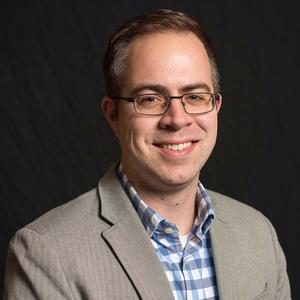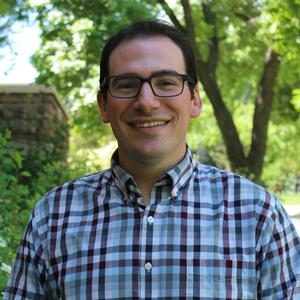Assistant Professors in the Department of Chemistry, Justin Sambur and Joseph Zadrozny, have been awarded a combined total of $1.36 million as part of the National Science Foundation’s (NSF) Faculty Early Career Development (CAREER) Program.
The CAREER Program provides the NSF’s most prestigious awards for early-career faculty who can serve as academic role models in research and education while leading advances in the mission of their department or organization. The program aids awardees in the early development of their academic careers with funding for their proposed research and education plans. Successful proposals build a firm foundation for a lifetime of contributions to research, education, and their integration.
Joseph Zadrozny is developing new classes of molecules with environmentally sensitive quantum properties

In his proposal to the NSF CAREER Program titled “Robust Coherence and High Sensitivity in Metal-Ion Nuclear-Spin Qubits,” Zadrozny’s research focuses on understanding how to amplify environmental detection by the quantum states of metal-ion magnetic nuclei. This insight would be essential for the development of next-generation quantum bits or MRI sensors.
“This award hits my group at a critical time,” Zadrozny said. “It’ll enable us to capitalize on some recent discoveries – which were made with the nuclear magnetic resonance spectrometers in the Analytical Resources Core – and enable the support of students to solely dedicate themselves to science.”
Combining chemistry, physics and quantum information science, Zadrozny’s proposal aims to educate scientists at all levels in these areas. Even kids will get a chance to learn about the exciting, and complicated, quantum world through a STEM kit built around understanding fundamental magnetic phenomena as well as outreach activities with a local science museum.
“The museum outreach is one of my favorite parts of what we’re trying to do,” Zadrozny said. “Quantum mechanics, the fundamental science that is driving transformative new technology development, is profoundly complex and thus, highly intimidating to newcomers. We need to fix that to build the quantum workforce needed for next-century scientific achievement.”
During the grant period, the Zadrozny Group will work with Fort Collins Museum of Discovery to develop a museum takeover based on quantum science.
“The overall hypothesis is that exposure at a young age will engender familiarity with some of the ideas of quantum science,” Zadrozny said, “and thus dissolve barriers to enter into the field for the students when they get to the more advanced level.”
Zadrozny will receive $685,000 for an estimated five-year period starting in March 2021.
Justin Sambur is developing new materials for next-generation batteries

Our ability to produce renewable energy is outpacing our ability to store and rapidly deliver the abundant supply of clean energy.
Renewable energy capacity is increasing and expected to meet global energy demand this century. However, the storage and rapid delivery of this abundant supply remains a critical unmet challenge.
Sambur’s CAREER award project titled, “Illuminating structure-property relationships in energy storage materials via quantitative light microscopy,” focuses on the discovery of design principles for safe, fast-charging, and long-lasting Li-ion battery materials necessary for high power applications such as electric vehicles, power tools, and portable electronic devices.
“My team has been working hard over the last four years on developing new tools to study battery materials,” Sambur said. “In an effort led by graduate student Colby Evans, we have developed the capability to use a light microscope to study single battery particles.”
The Sambur Group is developing new imaging tools that reveal Li-ion motion at the nanoscale. The group will apply these new imaging methods to study a novel class of materials that have the potential to be integrated into high power Li-ion batteries.
Another goal for Sambur is to make the field of microscopy more accessible to CSU students and high school students across Colorado through the development of homemade, low-cost microscopes and age-appropriate learning activities.
“Imaging is an essential skill in all scientific disciplines, but there are few opportunities for students to receive an education in microscopy,” Sambur said. “One issue is that universities and K-12 schools lack microscopy tools to educate large numbers of students.”
Sambur’s proposal to NSF includes developing low-cost microscopes with experiential learning activities tailored to different age groups to address this critical need. This effort aims to promote science to middle and high school students, particularly underrepresented women and Hispanic/Latinx students in the Colorado STEM education pipeline.
Sambur will receive $675,000 for an estimated five-year period starting in February 2021.